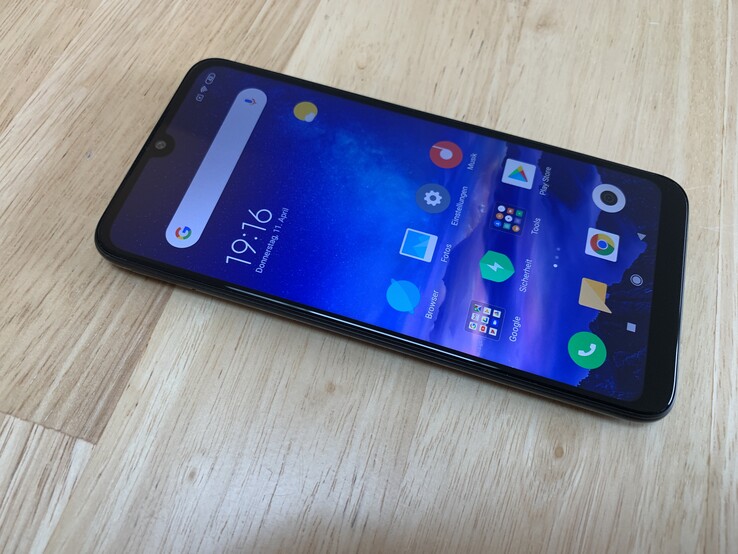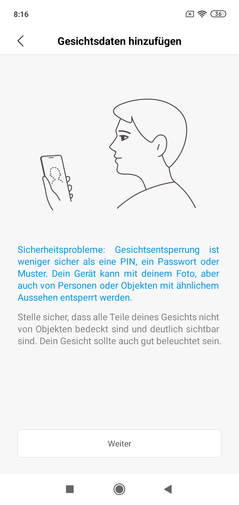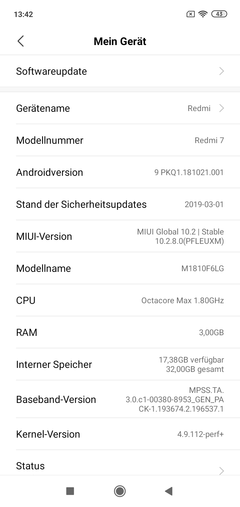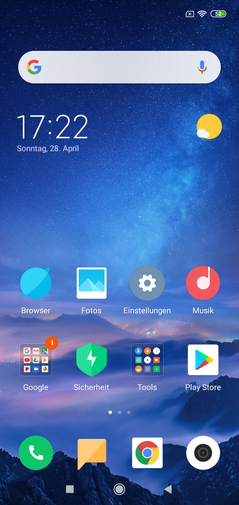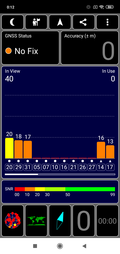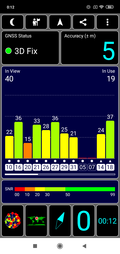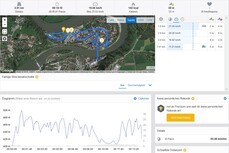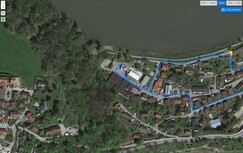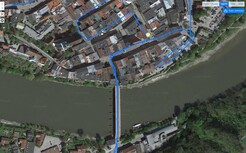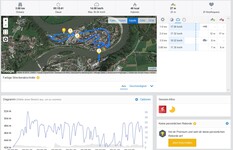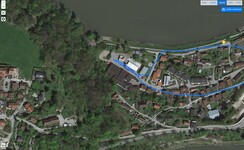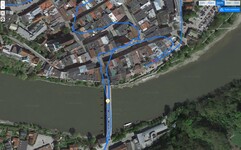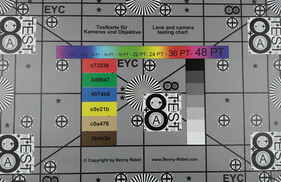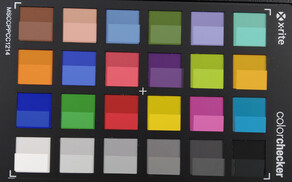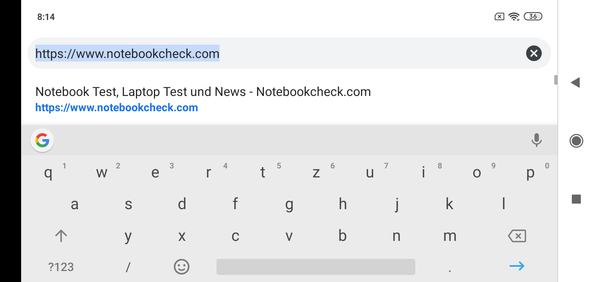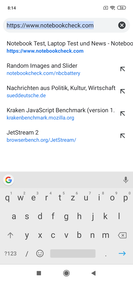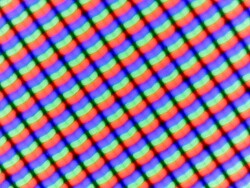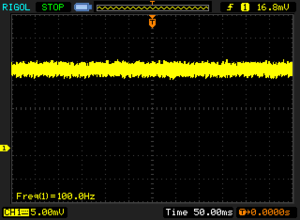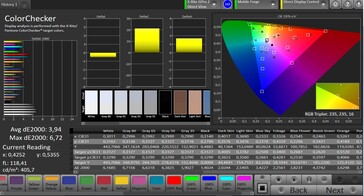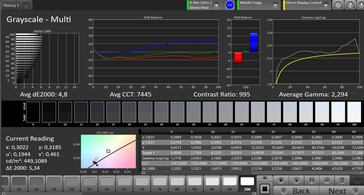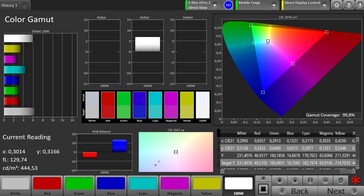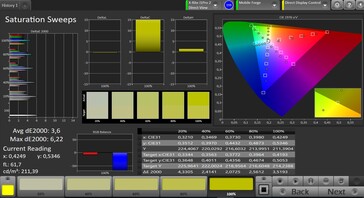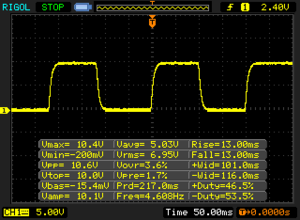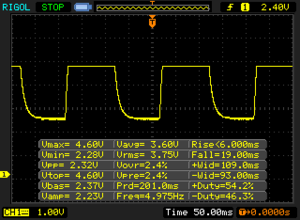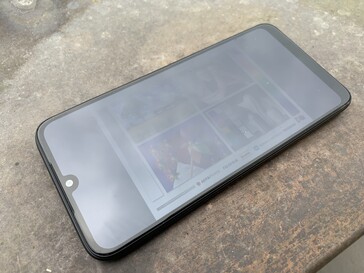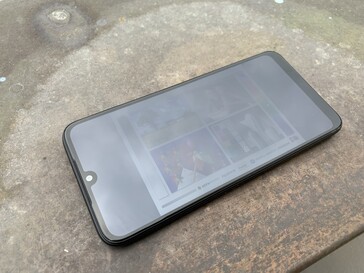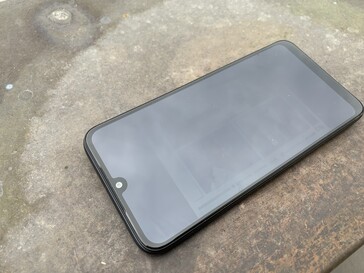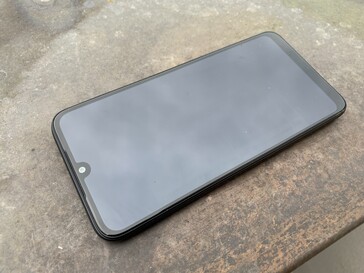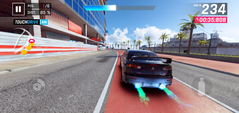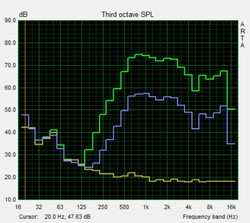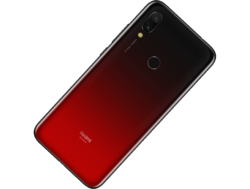Xiaomi Redmi 7 Smartphone Review
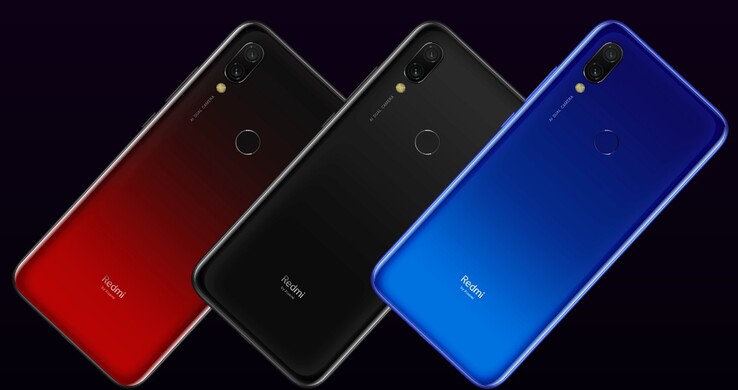
The Xiaomi Redmi 7 has now arrived in the western hemisphere and is available in a similar price range as in its country of origin (China). The 32-GB version is available for around $150, which is very cheap for a smartphone with a mid-range processor. But if you know the Redmi series, you will know all about its great price-to-performance ratio. Xiaomi Redmi smartphones offer the connectivity and features that are usually reserved for significantly more expensive phones.
The Redmi 7 is the seventh generation of the original Redmi smartphone and fans of the brand have been eagerly awaiting its release. Meanwhile, other manufacturers have started to realize that they must up their game in the $150-and-below price segment if they want to keep up. Therefore, today's test unit has to face a larger group of competitors than the Xiaomi Redmi did several years ago. For example, we have the Motorola Moto G7 Play - a powerful mid-range smartphone - or the Huawei P Smart from 2018, which is now positioned in a similar price range as our test unit. The Wiko View 2 Go is a traditional device of the lower mid-range segment. We shall also be comparing the Redmi 7 to its predecessor, the Redmi 6, in order to find out what changes have been made.
Case – the device has a stable plastic case
The large battery makes the Xiaomi Redmi 7 rather heavy. At 180 grams it weighs significantly more than most other devices in this price range. However, it also offers the largest display thanks to narrow bezels and a waterdrop-shaped notch for the camera. This makes it look a lot more modern than its predecessor, which had wide bezels. The best the other competitors have to offer is a standard-width notch. The smartphone is one of the thickest among its competitors at 8.5 millimeters, but the difference is hardly worth mentioning.
The Xiaomi Redmi 7 is available in three colors: classic black, red and blue - each with a smart color gradient on the back. The frame is matte while the back has a shiny surface and shows up dirt and fingerprints quite easily.
The Redmi 7 is a very stable smartphone. It can neither be warped nor does it respond to pressure on the front or back of the device.
Connectivity - various options for the Redmi 7
The Xiaomi Redmi 7 is available with three storage options: 16 GB, 32 GB or 64 GB. The difference in price between the smallest and largest storage configuration is around $30. While the larger configuration of the predecessor, the Xiaomi Redmi 6, was still equipped with 4 GB of RAM, today's version offers the following combinations: 2 GB of RAM with 16 GB of storage and 3 GB of RAM for 32 GB and 64 GB of storage. Our test unit is equipped with 32 GB. All devices offer a dedicated microSD slot that can be used in addition to two SIM cards.
Xiaomi continues to use the traditional micro-USB port and also offers a 3.5-mm audio jack. The device includes FM radio and even features an infrared sensor, which means the smartphone can be used as a remote control for numerous devices with the help of an app.
Software – current Android software on the Redmi 7
The Redmi 7 runs on Android 9 in combination with Xiaomi's own user interface MIUI. This offers numerous tools, many of which cannot be removed, even if they are not needed. The device also has two ad apps - but at least these can be deleted easily. The interface lets users clone apps - for example in order to have two WhatsApp accounts running on the same phone.
The phone also has several other useful functions, such as being able to set up a second profile, as well as an enterprise mode for companies that limits access to certain websites for employees or monitors their activities (available upon agreement with the manufacturer).
Xiaomi did not organize Widevine certification for this smartphone, so that many providers only let you stream content in low SD quality.
The security patches are dated March 2019 and are therefore quite up-to-date at the time of testing. This alone is remarkable for a device in this price range.
Communication and GPS – average positioning
Xiaomi has not improved the LTE speeds of the Redmi 7. Like the Redmi 6, this device offers maximum download speeds of 300 Mb/s and upload speeds of 150 Mb/s. The variety of available frequencies is rather limited too but should be fine within the US. However, make sure you check connectivity before traveling to places that are further off. Reception is good and we had no issues using the phone indoors in urban surroundings.
Wi-Fi continues to be limited to 802.11b/g/n, so Gigabit Wi-Fi is not an option. The device cannot even make full use of the 100 Mb/s that the n standard offers. Its speeds remain between 51.4 and 55.4 Mb/s. This is a normal value, although the predecessor was a couple of Mb/s faster than today's test unit. While this difference should not be noticeable in everyday use, the Redmi 7 cannot stand out from its competition in terms of Wi-Fi performance.
| Networking | |
| iperf3 transmit AX12 | |
| Xiaomi Redmi 6 | |
| Xiaomi Redmi 7 | |
| Wiko View 2 Go | |
| Huawei P smart | |
| Motorola Moto G7 Play | |
| iperf3 receive AX12 | |
| Xiaomi Redmi 6 | |
| Wiko View 2 Go | |
| Huawei P smart | |
| Xiaomi Redmi 7 | |
| Motorola Moto G7 Play | |
The smartphone recognizes several satellites indoors but does not manage to get a signal that is strong enough to position us. Positioning is fast and accurate within five meters outdoors.
We took the phone for a bike ride together with the Garmin Edge 520 in order to test its navigation properties. The results are okay. The Redmi 7 only managed to vaguely track our path. It did not track our precise route - not when riding in narrow alleys nor on wide open roads. The Redmi 7 should only be used for navigation when you do not depend on precision.
Telephone and Voice Quality
The telephone app comes from Xiaomi and has the keypad as its centerpiece. Above that, the app displays a list of recent calls. Xiaomi does not yet offer a dark mode as it is available on Google's standard app.
The voice quality over the earpiece is not bad but could be a little louder. At least there is no droning even at maximum volume and our call partner's voice is clear and easy to understand. The microphone also transmits our voice clearly at all volumes, although there is some distortion when talking forcefully. We can still understand our call partner clearly on speakerphone, but they had some difficulty understanding us when we spoke quietly.
Cameras – better resolution on the front
The resolution of one lens has been reduced in comparison to its predecessor, while another's has been increased. The third lens remains the same: The main camera on the back continues to take pictures with 12 MP and seems to be equipped with the same sensor as its predecessors Redmi 6 and Redmi 5, while the additional lens that is used for bokeh effects only offers 2 MP. The front camera now has a resolution of 8 MP instead of 5.
The predecessor already offered decent image quality considering its price range and produced good images in normal lighting. The Redmi 7 has similar characteristics. It offers good image quality and color reproduction, although more-expensive cameras manage to capture significantly more details. The photos turn out quite well even in bad lighting, which is good for a device of this price.
Videos can be recorded at a maximum of 1080p and 30 fps and we are quite impressed with the fast and smooth automatic exposure control. The image quality of videos is decent as well.
The front camera takes good pictures in good lighting, but the fixed focus means you need to find the right distance to get a sharp image.
We put the main camera through a few tests under controlled lighting in our lab. We photographed our test chart, which poses a series of challenges to the camera, and our color chart, which we compared to a reference photo.
The details of the test chart appear slightly blurred while color fields are displayed precisely. The camera easily handles text on colored background and also offers fairly accurate colors - although some appear a touch too dark.
Accessories and Warranty – the Redmi 7 comes protected
The smartphone comes with an AC adapter plus USB cable as well as a silicone case.
While there is warranty in some countries, this is not the case everywhere and even if there is warranty, you cannot always claim it directly from Xiaomi, and you might have to get the help of your dealer. We therefore highly recommend you find a reliable retailer to buy your smartphone from.
Input Devices & Handling – reliable touchscreen
The Xiaomi Redmi 7's touchscreen is very reliable and responds well even at the edges and in the corners. The device uses Google's GBoard as its virtual keyboard, which enables fast typing. It also lets you choose between different color themes or use voice command.
The fingerprint reader is positioned on the back of the smartphone and also works reliably and quickly. Xiaomi also lets you unlock the device using face recognition but warns users that the feature can be tricked by using a photo. This didn't work when we tried it out, but you should still be careful and aware of the fact that this feature is based on software only and does not include any infrared or 3D scanning. It also doesn't work in the dark.
Display – with a waterdrop notch
The Redmi 7 display has a 19:9 aspect ratio, which is typical for devices equipped with a notch. This is basically like the traditional 16:9 ratio with an additional strip at the top where the notch is integrated. The display has a resolution of 1520x720 pixels, which is normal for this price range. The Huawei P Smart on the other hand features extended Full HD resolution - but this device also had a higher starting price when it first came out.
The screen brightness has improved significantly compared to its predecessor and now reaches an average 441 cd/m² on a white background at maximum brightness. Other devices in this price range, however, offer even more luminosity.
| |||||||||||||||||||||||||
Brightness Distribution: 90 %
Center on Battery: 444 cd/m²
Contrast: 987:1 (Black: 0.45 cd/m²)
ΔE ColorChecker Calman: 3.94 | ∀{0.5-29.43 Ø4.79}
ΔE Greyscale Calman: 4.8 | ∀{0.09-98 Ø5}
99.8% sRGB (Calman 2D)
Gamma: 2.294
CCT: 7445 K
| Xiaomi Redmi 7 IPS, 1520x720, 6.3" | Xiaomi Redmi 6 IPS, 1440x720, 5.5" | Motorola Moto G7 Play IPS, 1512x720, 5.7" | Huawei P smart IPS, 2160x1080, 5.7" | Wiko View 2 Go IPS, 1512x720, 5.9" | |
|---|---|---|---|---|---|
| Screen | -13% | -4% | 1% | 6% | |
| Brightness middle (cd/m²) | 444 | 373 -16% | 479 8% | 573 29% | 465 5% |
| Brightness (cd/m²) | 441 | 361 -18% | 481 9% | 568 29% | 462 5% |
| Brightness Distribution (%) | 90 | 94 4% | 94 4% | 89 -1% | 84 -7% |
| Black Level * (cd/m²) | 0.45 | 0.53 -18% | 0.37 18% | 0.63 -40% | 0.32 29% |
| Contrast (:1) | 987 | 704 -29% | 1295 31% | 910 -8% | 1453 47% |
| Colorchecker dE 2000 * | 3.94 | 4.22 -7% | 4.91 -25% | 4.2 -7% | 4.76 -21% |
| Colorchecker dE 2000 max. * | 6.72 | 10.14 -51% | 9.47 -41% | 6.4 5% | 7.71 -15% |
| Greyscale dE 2000 * | 4.8 | 3.3 31% | 6.4 -33% | 4.6 4% | 4.6 4% |
| Gamma | 2.294 96% | 2.321 95% | 2.108 104% | 2.24 98% | 2.674 82% |
| CCT | 7445 87% | 6862 95% | 7292 89% | 7157 91% | 6806 96% |
* ... smaller is better
Screen Flickering / PWM (Pulse-Width Modulation)
| Screen flickering / PWM detected | 100 Hz | ≤ 20 % brightness setting | |
The display backlight flickers at 100 Hz (worst case, e.g., utilizing PWM) Flickering detected at a brightness setting of 20 % and below. There should be no flickering or PWM above this brightness setting. The frequency of 100 Hz is very low, so the flickering may cause eyestrain and headaches after extended use. In comparison: 53 % of all tested devices do not use PWM to dim the display. If PWM was detected, an average of 8152 (minimum: 5 - maximum: 343500) Hz was measured. | |||
We noticed PWM flickering at 20% screen brightness with a frequency of 100 Hz. This is quite low and we would definitely recommend sensitive users try the smartphone out before purchase.
The black value is average at 0.45 cd/m². Black areas do not appear deep black but rather dark gray at high screen brightness. The contrast ratio is accordingly low at 987:1. Colors are also displayed rather conservatively.
The Redmi 7 offers various image modes. Users can set the white balance to automatic or choose between the presets warm or cold. The color deviation is not as strong as on other devices using the standard settings, although there is a significant blue cast visible in our test with the spectrophotometer and CalMAN software.
Display Response Times
| ↔ Response Time Black to White | ||
|---|---|---|
| 26 ms ... rise ↗ and fall ↘ combined | ↗ 13 ms rise | |
| ↘ 13 ms fall | ||
| The screen shows relatively slow response rates in our tests and may be too slow for gamers. In comparison, all tested devices range from 0.1 (minimum) to 240 (maximum) ms. » 61 % of all devices are better. This means that the measured response time is worse than the average of all tested devices (20.3 ms). | ||
| ↔ Response Time 50% Grey to 80% Grey | ||
| 25 ms ... rise ↗ and fall ↘ combined | ↗ 6 ms rise | |
| ↘ 19 ms fall | ||
| The screen shows relatively slow response rates in our tests and may be too slow for gamers. In comparison, all tested devices range from 0.165 (minimum) to 636 (maximum) ms. » 34 % of all devices are better. This means that the measured response time is better than the average of all tested devices (31.7 ms). | ||
The smartphone can be used outdoors but becomes difficult to read in direct sunlight due to strong reflections. The side viewing angles show slight changes in brightness but content continues to be easily readable from every angle.
Performance – power for the bottom mid-range
The Snapdragon 632 is responsible for performance. This is a lower mid-range SoC that can also be found in the Motorola Moto G7 Play. This processor enables our test unit to reach very good performance rates for this price range, positioning it at the top for every benchmark we did. The generous 3 GB of RAM also plays its part, enabling the user to get the most out of the processor. This combination ensures smooth, easy scrolling through menus and quick switching between apps. While the CPU might not manage to keep up with very demanding computations, it is fully sufficient for everyday use.
| PCMark for Android | |
| Work performance score (sort by value) | |
| Xiaomi Redmi 7 | |
| Xiaomi Redmi 6 | |
| Motorola Moto G7 Play | |
| Huawei P smart | |
| Wiko View 2 Go | |
| Average Qualcomm Snapdragon 632 (6566 - 7498, n=6) | |
| Work 2.0 performance score (sort by value) | |
| Xiaomi Redmi 7 | |
| Xiaomi Redmi 6 | |
| Motorola Moto G7 Play | |
| Huawei P smart | |
| Wiko View 2 Go | |
| Average Qualcomm Snapdragon 632 (5785 - 6076, n=6) | |
| GFXBench 3.1 | |
| on screen Manhattan ES 3.1 Onscreen (sort by value) | |
| Xiaomi Redmi 7 | |
| Xiaomi Redmi 6 | |
| Motorola Moto G7 Play | |
| Huawei P smart | |
| Wiko View 2 Go | |
| Average Qualcomm Snapdragon 632 (6.5 - 15, n=6) | |
| Average of class Smartphone (11 - 166, n=159, last 2 years) | |
| 1920x1080 Manhattan ES 3.1 Offscreen (sort by value) | |
| Xiaomi Redmi 7 | |
| Xiaomi Redmi 6 | |
| Motorola Moto G7 Play | |
| Huawei P smart | |
| Wiko View 2 Go | |
| Average Qualcomm Snapdragon 632 (6.9 - 7, n=6) | |
| Average of class Smartphone (8.4 - 413, n=158, last 2 years) | |
| AnTuTu v7 - Total Score (sort by value) | |
| Xiaomi Redmi 7 | |
| Xiaomi Redmi 6 | |
| Motorola Moto G7 Play | |
| Huawei P smart | |
| Wiko View 2 Go | |
| Average Qualcomm Snapdragon 632 (97294 - 108408, n=5) | |
The Redmi 7 also does a good job when browsing the web: It is faster than its competitors with websites loading quickly. Only images require a short wait. The smartphone can easily handle complex HTML5 pages.
| Jetstream 2 - 2.0 Total Score | |
| Average of class Smartphone (23.8 - 387, n=156, last 2 years) | |
| Xiaomi Redmi 7 (Chrome 73) | |
| Average Qualcomm Snapdragon 632 (n=1) | |
| Speedometer 2.0 - Result 2.0 | |
| Average of class Smartphone (15.2 - 643, n=132, last 2 years) | |
| Xiaomi Redmi 7 (Chome 73) | |
| Average Qualcomm Snapdragon 632 (n=1) | |
| WebXPRT 3 - Overall | |
| Average of class Smartphone (38 - 380, n=41, last 2 years) | |
| Xiaomi Redmi 7 (Chrome 73) | |
| Average Qualcomm Snapdragon 632 (50 - 58, n=3) | |
| Xiaomi Redmi 6 (Chrome 70) | |
| Octane V2 - Total Score | |
| Average of class Smartphone (2228 - 121337, n=203, last 2 years) | |
| Average Qualcomm Snapdragon 632 (8185 - 8420, n=6) | |
| Xiaomi Redmi 7 (Chrome 73) | |
| Motorola Moto G7 Play | |
| Huawei P smart (Chrome 64) | |
| Xiaomi Redmi 6 (Chrome 70) | |
| Wiko View 2 Go (Chrome 71) | |
| Mozilla Kraken 1.1 - Total | |
| Wiko View 2 Go (Chrome 71) | |
| Xiaomi Redmi 6 (Chrome 70) | |
| Huawei P smart (Chrome 64) | |
| Average Qualcomm Snapdragon 632 (4806 - 5037, n=5) | |
| Xiaomi Redmi 7 (Chrome 73) | |
| Motorola Moto G7 Play | |
| Average of class Smartphone (257 - 28190, n=158, last 2 years) | |
* ... smaller is better
We received normal results for this price range from our test with our reference microSD card Toshiba Exceria Pro M501. We would like to note that it is great to have a dedicated microSD slot and still be able to use two SIM cards simultaneously. The reader is also compatible with exFAT formatting.
The internal eMMC storage offers the usual read speeds in this price range but can't quite keep up with its competitor's write rates.
| Xiaomi Redmi 7 | Xiaomi Redmi 6 | Motorola Moto G7 Play | Huawei P smart | Average 32 GB eMMC Flash | Average of class Smartphone | |
|---|---|---|---|---|---|---|
| AndroBench 3-5 | 26% | 73% | 14% | -3% | 1310% | |
| Sequential Read 256KB (MB/s) | 298 | 287 -4% | 289 -3% | 269.4 -10% | 242 ? -19% | 2211 ? 642% |
| Sequential Write 256KB (MB/s) | 84.7 | 118.4 40% | 111 31% | 121.1 43% | 100.5 ? 19% | 1827 ? 2057% |
| Random Read 4KB (MB/s) | 73.6 | 52.5 -29% | 74 1% | 66.1 -10% | 43.1 ? -41% | 294 ? 299% |
| Random Write 4KB (MB/s) | 14.4 | 36.3 152% | 73 407% | 21.3 48% | 22.3 ? 55% | 337 ? 2240% |
| Sequential Read 256KB SDCard (MB/s) | 85.9 ? | 82.9 ? -3% | 84.7 ? -1% | 82.3 ? -4% | 71.8 ? -16% | |
| Sequential Write 256KB SDCard (MB/s) | 63.3 ? | 64.4 ? 2% | 64.1 ? 1% | 72.4 ? 14% | 52.9 ? -16% |
Games – not always a smooth ride
The high frame-rate mode cannot be activated when playing Arena of Valor and players are therefore limited to 30 fps when playing this game. While Asphalt 9 cannot be displayed entirely smoothly, the judders are so small that you have to look closely to notice them. Only Shadow Fight 3 runs at 60 fps, although this speed cannot be kept up at high details.
The proximity sensor and touchscreen can both reliably be used as controls when playing games.
Emissions – Xiaomi phone with low temperatures
Temperature
The surface temperatures are acceptable even under high load: The maximum hot spot reaches 39.4 °C, which can be felt but is still far from worrying. The phone does not heat up noticeably while idling.
Even after a long period under load, the Xiaomi device still manages to maintain maximum performance. We tested this with the GFXBench battery test: The frame rates remain constant even after 30 rounds.
(+) The maximum temperature on the upper side is 39.4 °C / 103 F, compared to the average of 35.2 °C / 95 F, ranging from 21.9 to 247 °C for the class Smartphone.
(+) The bottom heats up to a maximum of 39.4 °C / 103 F, compared to the average of 34 °C / 93 F
(+) In idle usage, the average temperature for the upper side is 29.6 °C / 85 F, compared to the device average of 32.9 °C / 91 F.
Speaker
Apart from the significantly higher volume compared to the speaker in the Xiaomi Redmi 6, its successor Redmi 7 offers a more balanced sound overall. The sound is surprisingly warm and quite clear at medium volume. However, the speaker is slightly overcharged at maximum volume, which makes some frequencies uncomfortable to listen to and creates a more muddied sound. However, we are quite happy with the overall sound experience - particularly for such an affordable smartphone.
You can connect speakers or headphones via the 3.5-mm audio jack or using Bluetooth 4.2 including AptX HD. The connection is great and sounds are transmitted nicely.
Xiaomi Redmi 7 audio analysis
(+) | speakers can play relatively loud (82.8 dB)
Bass 100 - 315 Hz
(-) | nearly no bass - on average 67.7% lower than median
(+) | bass is linear (0% delta to prev. frequency)
Mids 400 - 2000 Hz
(-) | nearly no mids - on average 67.7% lower than median
(+) | mids are linear (0% delta to prev. frequency)
Highs 2 - 16 kHz
(-) | nearly no highs - on average 67.7% lower than median
(+) | highs are linear (0% delta to prev. frequency)
Overall 100 - 16.000 Hz
(-) | overall sound is not linear (123.8% difference to median)
Compared to same class
» 93% of all tested devices in this class were better, 6% similar, 1% worse
» The best had a delta of 11%, average was 35%, worst was 134%
Compared to all devices tested
» 98% of all tested devices were better, 2% similar, 0% worse
» The best had a delta of 4%, average was 24%, worst was 134%
Xiaomi Redmi 6 audio analysis
(±) | speaker loudness is average but good (77.6 dB)
Bass 100 - 315 Hz
(-) | nearly no bass - on average 30.7% lower than median
(±) | linearity of bass is average (8.8% delta to prev. frequency)
Mids 400 - 2000 Hz
(+) | balanced mids - only 4.8% away from median
(+) | mids are linear (6.4% delta to prev. frequency)
Highs 2 - 16 kHz
(+) | balanced highs - only 3.4% away from median
(+) | highs are linear (1.8% delta to prev. frequency)
Overall 100 - 16.000 Hz
(-) | overall sound is not linear (30.1% difference to median)
Compared to same class
» 78% of all tested devices in this class were better, 4% similar, 18% worse
» The best had a delta of 11%, average was 35%, worst was 134%
Compared to all devices tested
» 88% of all tested devices were better, 3% similar, 9% worse
» The best had a delta of 4%, average was 24%, worst was 134%
Battery Runtime - Redmi just keeps going
Power Consumption
The power consumption of our test unit is similar to that of the Motorola Moto G7 Play. This is no surprise as both smartphones are equipped with the same SoC. The Xiaomi Redmi 7 requires less power under load, which should offer some advantages in terms of runtime. The Redmi 7 also looks good when compared to the other devices, although it does consume more power than its predecessor.
| Off / Standby | |
| Idle | |
| Load |
|
Key:
min: | |
| Xiaomi Redmi 7 4000 mAh | Xiaomi Redmi 6 3000 mAh | Motorola Moto G7 Play 3000 mAh | Huawei P smart 3000 mAh | Wiko View 2 Go 4000 mAh | Average Qualcomm Snapdragon 632 | Average of class Smartphone | |
|---|---|---|---|---|---|---|---|
| Power Consumption | 19% | -13% | -1% | -3% | -10% | -32% | |
| Idle Minimum * (Watt) | 1 | 0.6 40% | 1 -0% | 0.62 38% | 0.8 20% | 0.924 ? 8% | 0.853 ? 15% |
| Idle Average * (Watt) | 1.7 | 1.3 24% | 1.7 -0% | 1.76 -4% | 2 -18% | 1.748 ? -3% | 1.43 ? 16% |
| Idle Maximum * (Watt) | 2.1 | 2.1 -0% | 2.6 -24% | 1.87 11% | 2.3 -10% | 2.36 ? -12% | 1.609 ? 23% |
| Load Average * (Watt) | 3.3 | 3 9% | 4.1 -24% | 4.47 -35% | 3.6 -9% | 4.18 ? -27% | 7.09 ? -115% |
| Load Maximum * (Watt) | 5.6 | 4.4 21% | 6.5 -16% | 6.39 -14% | 5.4 4% | 6.6 ? -18% | 11.2 ? -100% |
* ... smaller is better
Battery Runtime
Thanks to the generous 4000-mAh battery, our Redmi 7 offers excellent runtimes. It could almost last two entire workdays of constantly browsing the web on Wi-Fi before needing to recharge. The device lasts 4:28 hours under full load. This means that with normal phases of use and standby the device should last several days without having to be recharged.
The included quick-charge adapter has a rated output of 10 watts and recharges the device fully in around 2 hours.
| Xiaomi Redmi 7 4000 mAh | Xiaomi Redmi 6 3000 mAh | Motorola Moto G7 Play 3000 mAh | Huawei P smart 3000 mAh | Wiko View 2 Go 4000 mAh | |
|---|---|---|---|---|---|
| Battery runtime | -13% | -18% | -31% | -13% | |
| Reader / Idle (h) | 24.8 | 23.8 -4% | 16.4 -34% | ||
| H.264 (h) | 15 | 12.5 -17% | 10.3 -31% | ||
| WiFi v1.3 (h) | 14.1 | 11.6 -18% | 11.5 -18% | 9.4 -33% | 12.2 -13% |
| Load (h) | 4.5 | 4 -11% | 3.4 -24% |
Pros
Cons
Verdict – good price and performance coming from China
Despite the competition trying to catch up, Xiaomi continues to offer the best price-to-performance ratio. The Redmi 7 offers good performance, decent cameras, very long battery runtimes, a flashy design, a stable case, a decent speaker, a fast fingerprint reader and more-or-less up-to-date software for under $150.
Xiaomi has once again created a great smartphone at an affordable price: the Redmi 7.
Of course, the GPS module is not fully reliable and the earpiece could be louder. Warranty is another issue, plus there is quite a lot of unnecessary bloatware. But considering its low price, the Xiaomi Redmi 7 really is quite an impressive offer. If you are looking for an affordable, modern-looking smartphone, you will not get around the Redmi series.
However, devices such as the Moto G7 Play show that Xiaomi is no longer the only manufacturer to have understood how to create an affordable smartphone with high performance. If you are looking for higher screen resolution and an even better camera, you could take a look at the Huawei P Smart (2018), which is only minimally more expensive. However, neither of these two devices can keep up with the Redmi 7 in terms of battery runtime.
Xiaomi Redmi 7
- 10/31/2019 v7 (old)
Florian Schmitt




